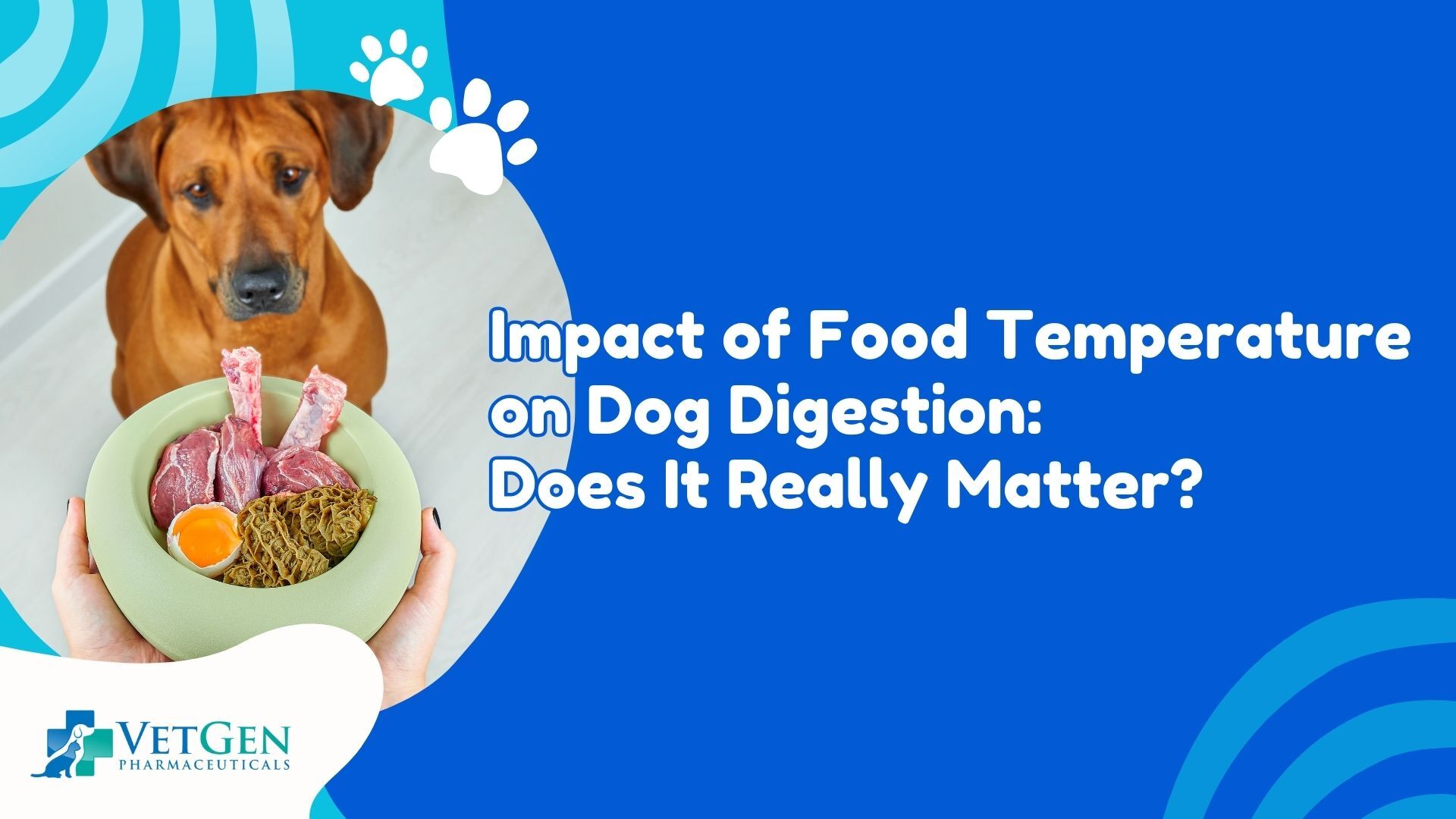As pet owners, we often wonder about various aspects of our dogs’ care, from exercise routines to grooming practices. One question that frequently arises is about the temperature of the food we serve them.
Does it really make a difference whether we serve their meals hot, cold, or somewhere in between? In this extensive analysis, you are going to learn a lot about dog digestive health and the effects of hot and cold food on the bodies of these animals.
The Impact of Food Temperature on Digestion
Cold Food
Feeding the dogs with cold food is well practiced, this may be in the form of dry kibble diets or wet food which is commonly stored and then served refrigerated. But how does this affect their digestion?
- Slower Digestion: Cold food may slow down the digestive process. Lower food temperatures can delay gastric emptying in dogs. This means that cold food might stay in the stomach longer before moving to the small intestine.
- Reduced Palatability: Some dogs may find cold food less appealing. This could lead to reduced food intake, which might impact their overall nutrition.
- Potential Benefits: On the flip side, slower digestion isn’t always a bad thing. It can lead to a feeling of fullness for a longer period, which might be beneficial for dogs prone to overeating.
Warm Food
Warming up your dog’s food is another option. Let’s look at how this might affect their digestion:
- Enhanced Aroma: Warm food tends to have a stronger smell, which can be more appealing to dogs. This might encourage picky eaters to consume their meals more readily.
- Faster Digestion: Warmer food may be digested more quickly than cold food. This could be beneficial for dogs with sensitive stomachs or those prone to digestive upset.
- Increased Palatability: Many dogs seem to prefer warm food over cold. This preference might lead to more consistent eating habits.
- Potential Drawbacks: However, serving food that’s too hot can pose risks. It might burn your dog’s mouth or esophagus, leading to discomfort or injury.
Room Temperature Food
Serving food at room temperature is often considered a happy medium:
- Natural State: In the wild, dogs would typically eat their prey at body temperature. Room temperature food most closely mimics this natural state.
- Balanced Digestion: Food at room temperature doesn’t slow down digestion like cold food, nor does it potentially speed it up like warm food might.
- Safe Option: There’s no risk of burning your dog’s mouth, as there might be with food that’s too warm.
The Science Behind Food Temperature and Digestion
To truly understand the impact of food temperature on dog digestion, we need to look at some scientific studies on the subject.
Research Findings
A study published in the American Journal of Physiology discovered that the temperature of consumed food can influence stomach motility in humans. Although this study was conducted on people, the findings may be applicable to dogs as well.
The researchers discovered that cold liquids (4°C) initially hindered stomach motility, whereas heated liquids (50°C) enhanced it. However, after around 30 minutes, the effects stabilized. This implies that, while food temperature may have an immediate effect on digestion, the body quickly adjusts to normalize the process.
Another study, exclusively on dogs, looked at how food temperature affected nutritional digestion. The researchers discovered that, while meal temperature affected the rate of passage through the digestive tract, it had no significant impact on overall nutritional digestibility.
Practical Considerations for Dog Owners
Given what we know about the impact of food temperature on dog digestion, what should pet owners consider when feeding their furry friends?
1. Individual Preferences
Just like humans, dogs have individual preferences. Some may prefer their food warm, while others might enjoy it cold. Observing your dog’s behavior and enthusiasm towards food at different temperatures can help you determine what works best for them.
2. Health Conditions
For dogs with certain health conditions, food temperature might be more important. For example:
- Dogs with dental issues might find warm food more comfortable to eat.
- Dogs prone to gastric dilatation-volvulus (bloat) might benefit from food served at room temperature to avoid swallowing excess ai
Always consult with your veterinarian about the best feeding practices for dogs with health concerns.
3. Consistency
Consistency is essential when serving your dog’s food, regardless of the temperature. Sudden alterations in food temperature may upset your dog’s stomach. If you decide to adjust the temperature at which you feed your dog’s food, do it slowly over a period of time.
4. Safety First
In case you decide to warm the food for your dog, be careful not to put it to the point of boil. It’s always good to check the temperature before serving, to avoid the hot food burning the mouth or the throat of your dog. A good rule of thumb is that the food should feel comfortable to touch with your hand.
5. Food Type Considerations
The impact of temperature might vary depending on the type of food you’re serving:
- Dry Kibble: Generally served at room temperature. Some owners soak it in warm water to enhance palatability and ease digestion, especially for older dogs or those with dental issues.
- Wet Food: Often stored in the refrigerator and can be served cold or warmed slightly. Avoid microwaving canned food in the can – transfer it to a microwave-safe dish first.
- Raw Food: Usually served cold or at room temperature. If you’re considering a raw diet for your dog, consult with a veterinary nutritionist to ensure it’s balanced and safe.
Conclusion
In conclusion, while food temperature has an effect on dog digestion, it may not be as important as other aspects such as diet quality, portion control, and feeding schedule.
Remember, each dog is unique. What works best for one person may not be appropriate for another. Pay attention to your dog’s preferences and behaviors, and don’t be afraid to speak with your veterinarian if you have any concerns about his digestion or feeding habits.
Frequently Asked Questions
Can I feed my dog food straight from the refrigerator?
While it’s safe to do so, some dogs may find cold food less palatable. If your dog seems reluctant to eat cold food, try letting it warm up to room temperature before servin
Is it okay to microwave my dog's food?
Yes, but do so carefully. Stir the food well and check the temperature before serving to avoid hot spots that could burn your dog’s mouth. Never microwave food in a metal contain
Does food temperature affect nutrient absorption?
Recent studies in the consumer’s field indicate that although food temperature influences the rate of digestion, it is not influential in the process of digestion.
My dog only eats warm food. Is this a problem?
As long as your dog is maintaining a healthy weight and getting proper nutrition, this preference isn’t necessarily a problem. Although, it’s always advisable to speak to the veterinarian about your pet’s eating pattern or routine.
Can changes in food temperature cause digestive upset?
This may result in minor gastrointestinal discomforts in some dogs in response to sudden changes in food temperature. One should note that resistance to change increases when change is attempted in large doses.






